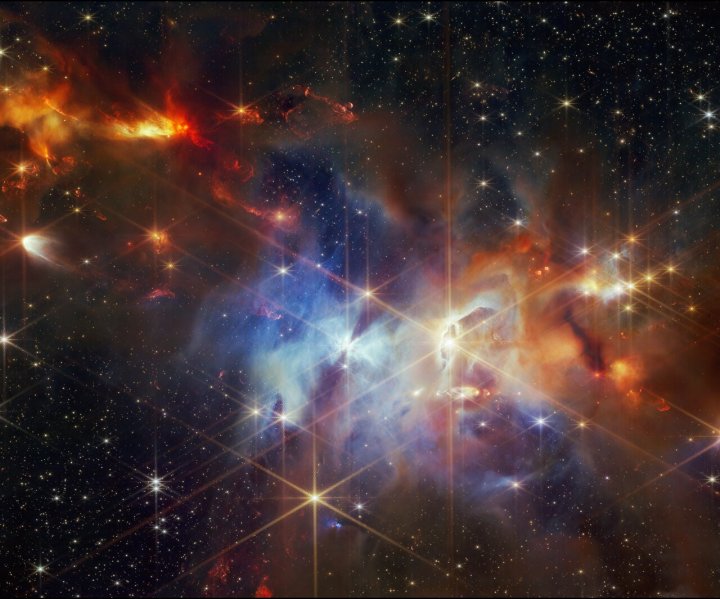
This stunning new image from the James Webb Space Telescope shows the famous Serpens Nebula, a dense star-forming region where new stars are being born amid clouds of dust and gas. Unlike some other nebulae, which are illuminated by radiation from stars that causes them to glow, this is a type called a reflection nebula, so it only shines due to the light that reflects from other sources.
As well as being visually striking, this image is also helping astronomers to learn about a special phenomenon related to newborn stars. When stars are first forming, they start as objects called protostars, and these protostars can give off extremely energetic jets of gas, which comes streaming off their north and south poles.
When this gas streaming off the protostar collides with nearby dust and gas, it creates shockwaves, which can be seen in the top left of the image. The red streaks of molecular hydrogen indicate these outflows, and one immediately noticeable thing about them is that they are all slanted at the same angle. This is the first time this phenomenon of aligned jets has been observed.
Normally, you would expect that a bunch of protostars would have outflows going in all different directions. So the fact these are all aligned suggests that there is something special going on in this region, which is affecting these young stars.
“Astronomers say there are a few forces that potentially can shift the direction of the outflows during this period of a young star’s life,” Webb scientists explain. “One way is when binary stars spin around each other and wobble in orientation, twisting the direction of the outflows over time.”
To learn more about the region, Webb scientists plan to use Webb’s NIRSpec instrument to understand what the cloud is made of, in addition to this data from Webb’s NIRCam instrument that was used to capture this image.
Editors’ Recommendations
Services Marketplace – Listings, Bookings & Reviews
